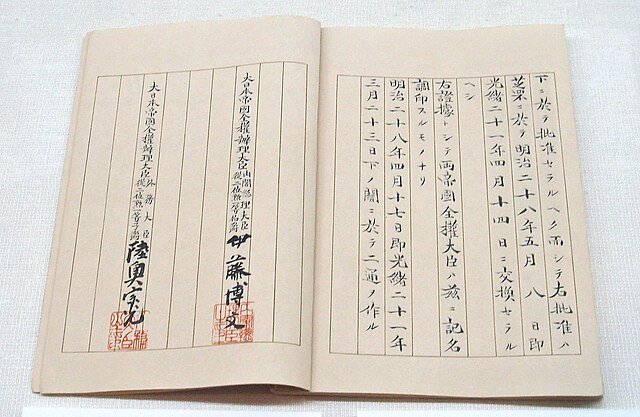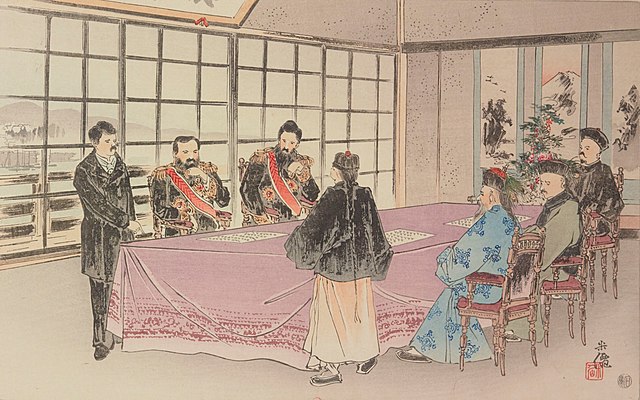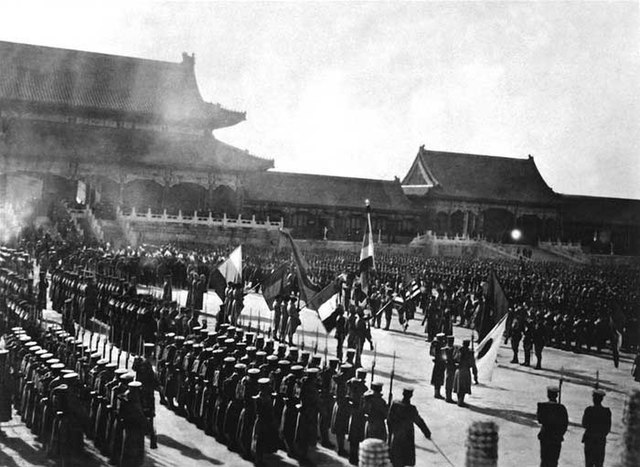The Treaty of Shimonoseki , also known as the Treaty of Maguan in China and Treaty of Bakan in the period before and during World War II in Japan, was an unequal treaty signed at the Shunpanrō hotel, Shimonoseki, Japan on April 17, 1895, between the Empire of Japan and Qing China, ending the First Sino-Japanese War.
Japanese version of the Treaty of Shimonoseki, April 17, 1895.
Independence Gate (front), Seoul, South Korea A symbol of the end of Korea's tributary relationship with the Qing Empire
Reconstructed Shunpanrō interior in the Sino-Japanese Peace Treaty Memorial Hall
Signing of Treaty of Shimonoseki
Unequal treaties refer to a series of treaties signed during the 19th and early 20th centuries, between China and various foreign powers. The agreements, often reached after a military defeat or a threat of military invasion, contained one-sided terms, requiring China to cede land, pay reparations, open treaty ports, give up tariff autonomy, legalise opium import, and grant extraterritorial privileges to foreign citizens.
The Eight-Nation Alliance inside the Chinese imperial palace, the Forbidden City, during a celebration ceremony after the signing of the Boxer Protocol, 1901.





